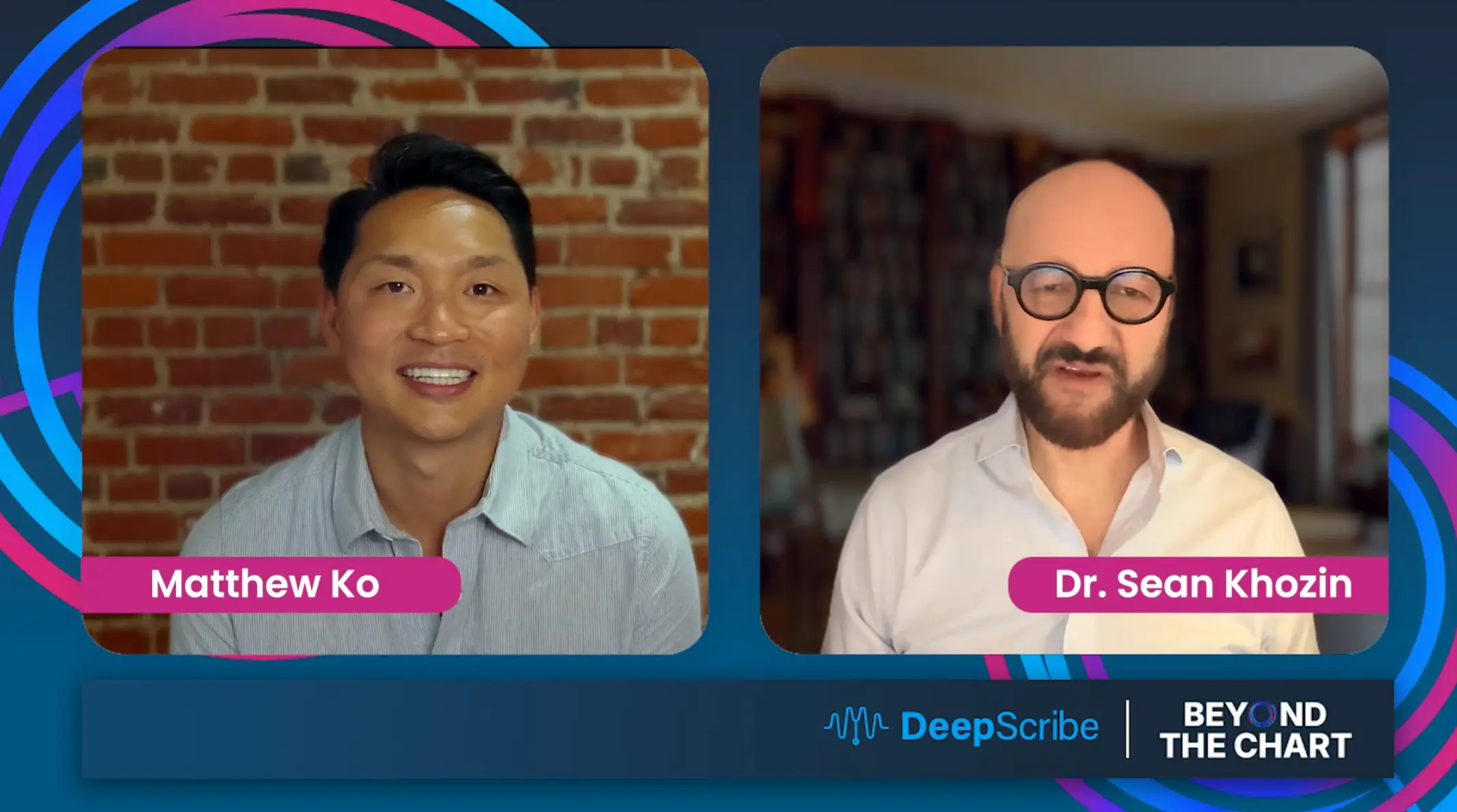How to Choose the Best AI Transcription Software for Your Practice
Choosing the best AI transcription software for your medical practice isn't easy, it requires a critical examination of technological pros and cons, and searching for something that genuinely fits your clinical and personal values.


How to Choose the Best AI Transcription Software
Since the advent of electronic health records and more rigorous documentation standards, clinicians across the United States have been searching for a documentation tool that can properly help them reduce their administrative load. In recent years, as technology has developed, AI transcription software has gained significant popularity among clinicians. But before deciding what the best AI transcription software is, it's important to consider how this technology works and what the pros and cons are.
Compared to traditional medical transcription services that involve human transcriptionists writing notes in real-time or from audio recordings, AI transcription software uses Artificial Intelligence and speech recognition technology to create digital records of the conversation. The result is a more streamlined, often cheaper, documentation process. But you've probably heard all of this before. Let's dive deeper into AI transcription software to understand its pros and cons.
The biggest upside of AI transcription software is that it eliminates the need for manual transcription services, which can be expensive and time-consuming. Since AI transcription is done almost instantaneously, it can help clinicians save time in their documentation process and because there is no third-party involvement, documentation turnaround time is much faster and notes are generally cheaper to produce. However, there is one critical downside that is worth dissecting and understanding as you weigh your options.
Dictation
Dictation is by far the biggest downside to AI transcription software. Because AI transcription software does not ambiently capture the patient visit as it happens, providers must dictate their clinical findings during the visit or after hours, disrupting workflows and often adding more administrative work to an already busy clinical schedule. On top of that, dictation can be tricky to learn and tedious to do, as it requires providers to vocally input detailed documentation of their patient encounters, in some instances even including punctuation. This process is time-consuming and, when done after-hours, requires significant information recall, a phenomenon known to reduce documentation quality, and efficacy, and can lead to malpractice lawsuits. In many ways, AI transcription software simply replaces the burden of typing notes with dictating them instead. For some providers, this is a preferred tradeoff, but for clinicians who are looking to significantly reduce their administrative load, connect more deeply with patients, and maximize reimbursement, AI transcription falls flat.
What You're Really Looking For
If you find yourself reading this, it's likely because you're searching for a solution that can help reduce the documentation burden. It's clear now that traditional transcription services and medical scribes don't meet the demands of the modern clinician, and that more modern solutions are positioned to take over the documentation industry, but it's important to consider your clinical values and what you are looking to get out of a documentation solution. While you may not fall directly into the below categories, these are two common threads that we see when talking with clinicians searching for a documentation solution.
Be More Present With Patients
For many clinicians, the widespread proliferation of EHRs and increasingly rigorous documentation standards are stripping the human element out of practicing medicine. Between a packed patient schedule and note-taking, the modern clinician simply does not have the time or bandwidth to connect with patients like how they used to — one of the most discouraging realities of the modern healthcare system, and it is felt across healthcare with ever-increasing rates of clinicians burnout, depression, and suicide.
Many clinicians are yearning for this connection with patients and are looking for a solution that allows them to do that.
Save Time
The average clinician spends a significant portion of their workday completing documentation and other administrative tasks, which are known to be the primary contributor to clinician burnout. Regardless of your reason to pursue medicine in the first place, saving time is likely a welcome by-product of an effective documentation solution. Depending on your values, saving time can allow you to go home on time, spend more time with family, or see more patients and thus increase revenue. Saving time is the key to unlocking workplace autonomy.
The DeepScribe Difference
DeepScribe is the first all-encompassing documentation solution that properly and comprehensively addresses the drawbacks of AI transcription software and other documentation solutions.
Ambient Technology
DeepScribe uses ambient AI to naturally capture and log information from a patient visit. Unlike AI transcription software, DeepScribe does not require providers to take notes or dictate during the visit or after hours, instead, all information discussed during the visit is automatically extracted from the natural conversation. This means that rather than substituting dictation for typing, DeepScribe removes all of the elements that distract from a patient visit and instead allows clinicians to focus entirely on providing care to patients — like how it used to be.
Significant Time-Savings
Thanks to DeepScribe's robust integrations with some of the leading EHR platforms, clinicians not only don't have to spend time writing notes during the visit, but they don't have to input finished notes into their EHR either. DeepScribe captures the visit, formats it into a billable note, then syncs that note into the appropriate fields of your EHR — meaning all you need to do is review and sign off on your notes at the end of the day. Many DeepScribe providers save up to three hours per day, time they spend with family, leaving work on time, seeing more patients or, more generally, restoring their life-work balance.
Affordable
The DeepScribe solution is 1/6 the cost of traditional human scribes and 1/3 the cost of more technology-focused tools like AI medical transcription, and allows care organizations to see consistent results at a price point that makes sense. No dictation. No fluctuating note quality. No intense training. No scribe turnover. No scheduling nightmare. Simply documentation made easy — easier than ever.
To conclude, DeepScribe uses natural language processing, machine learning, and AI that's more advanced than that of AI transcription tools to automate documentation, reduce the administrative burden, and allowing clinicians to bring the joy of care back to medicine — whatever that looks like for them.
Reach out to us to schedule a demo and learn how DeepScribe can help your practice reduce burnout and improve clinical efficiency.
text
Related Stories
Realize the full potential of Healthcare AI with DeepScribe
Explore how DeepScribe’s customizable ambient AI platform can help you save time, improve patient care, and maximize revenue.




